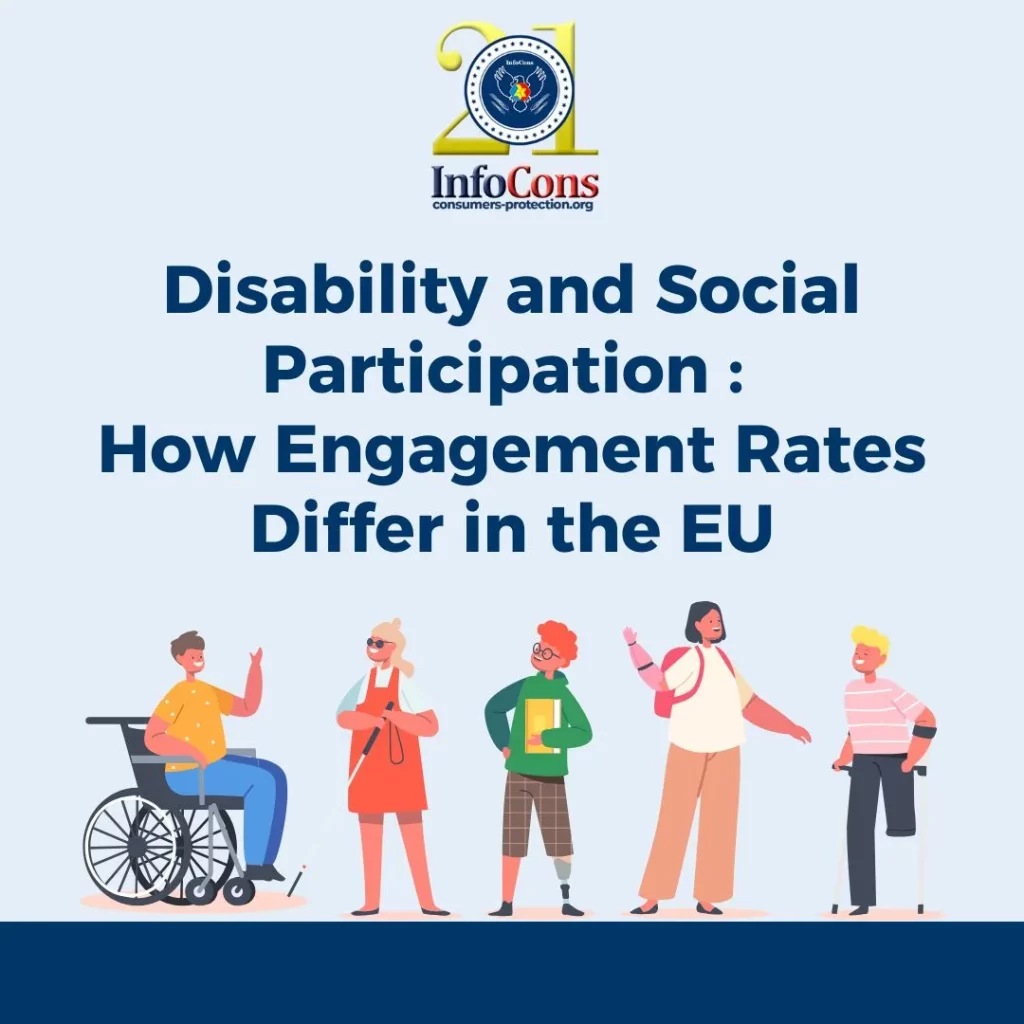
Social participation, including volunteering and active citizenship, plays a crucial role in building inclusive communities. In the EU, people with disabilities engage in these activities at varying rates compared to those without disabilities, with differences based on age and type of participation.
Volunteering Trends : Formal vs. Informal Participation
In 2022, 10.3% of people with disabilities reported engaging in formal volunteering—structured activities organized by groups or organizations. This was slightly lower than the 13.0% participation rate among those without disabilities. Informal volunteering, such as helping neighbors with daily tasks, saw a slightly smaller gap: 13.3% of individuals with disabilities participated, compared to 14.7% of those without.
Read also : 1 in 20 Europeans Diagnosed with Cancer – World Cancer Day 2025
Active Citizenship : Political and Community Involvement
Active citizenship, which includes participating in political parties, community groups, or public protests, was reported by 7.4% of people with disabilities, compared to 8.4% of those without. While the overall numbers were low, engagement varied significantly by age.
Age and Participation : Young Adults vs. Seniors
Interestingly, younger individuals (aged 16-44) with disabilities showed higher engagement rates in social activities than their peers without disabilities. Among this group, formal volunteering was more common (14.8% vs. 12.8%), as was informal volunteering (19.5% vs. 14.7%) and active citizenship (12.4% vs. 8.5%).
However, the trend reversed among older adults (65+), where participation rates dropped significantly for those with disabilities. Formal volunteering among seniors with disabilities was just 7.7%, compared to 13.5% for those without disabilities. Similarly, informal volunteering saw a decline, with participation rates at 8.9% vs. 14.5%.
Read also : The EU’s Shift Towards Greater Sustainable Competitiveness
Building Inclusive Opportunities for Participation
These statistics highlight the need for accessible volunteering and community participation opportunities for people with disabilities, particularly among older adults. Encouraging inclusive engagement can help bridge these gaps and promote social integration for all individuals, regardless of ability.
Source : Eurostat
InfoCons – European Organization for Consumer Protection and Promotion of Programs and Strategies , a full member of the World Organization Consumers International, founding member of the Federation of Consumer Associations, and member of ANEC .